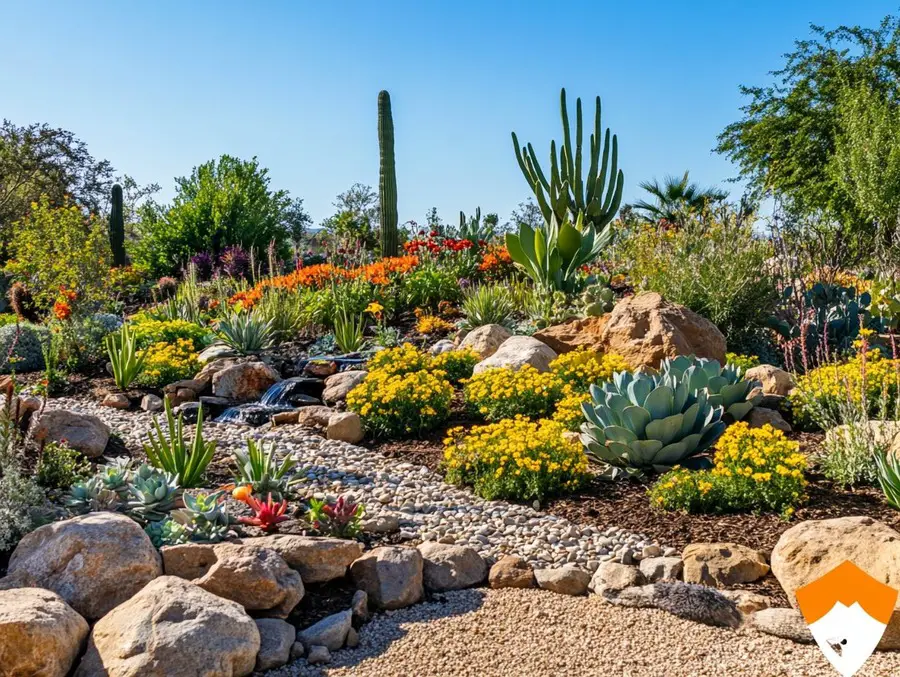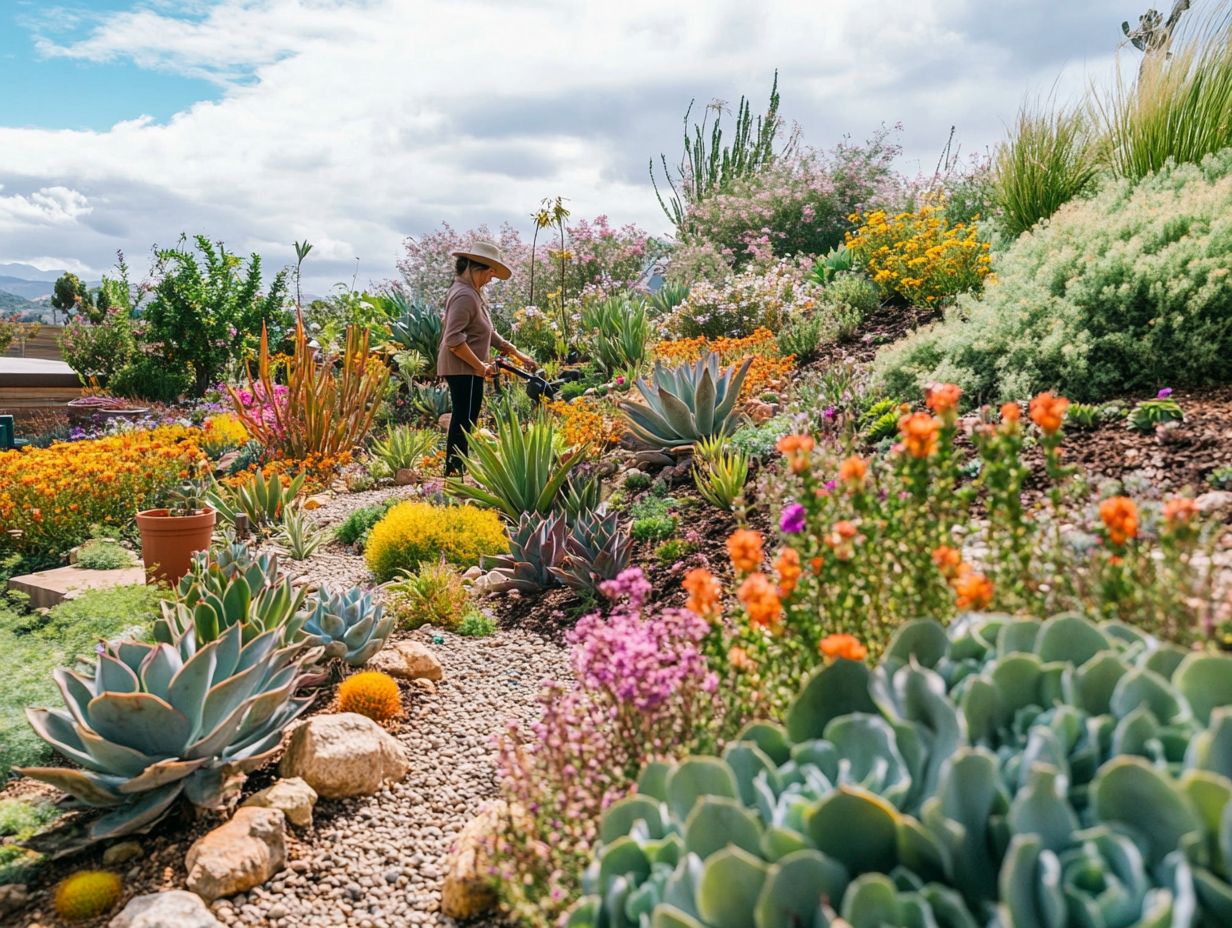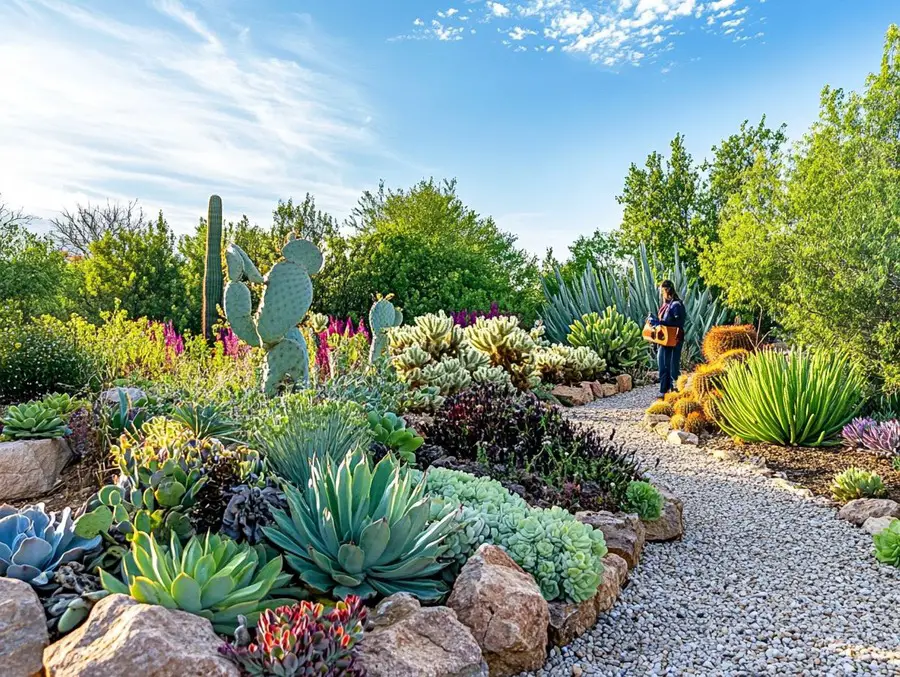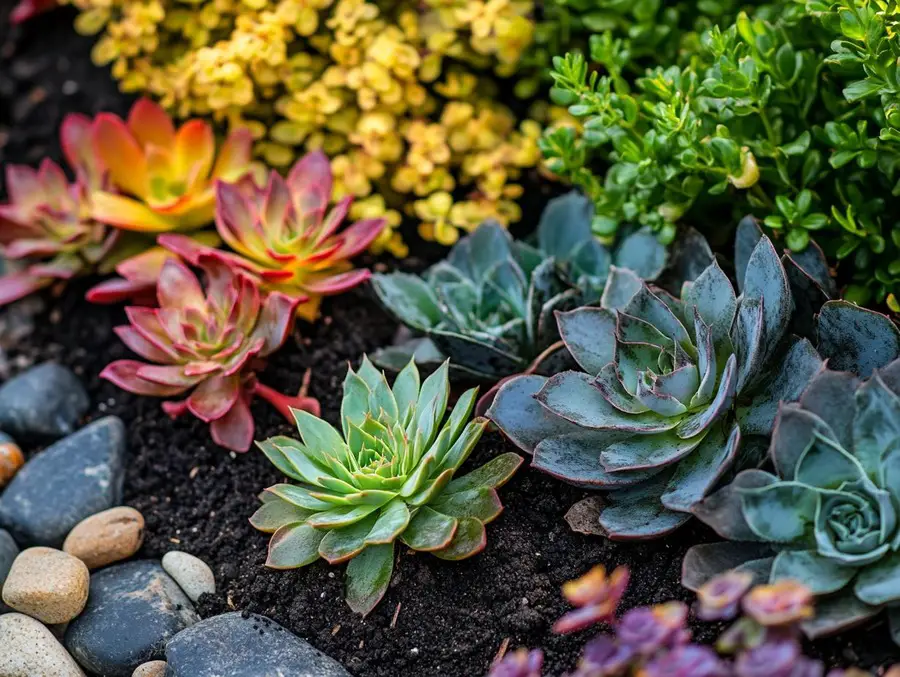We use affiliate links. If you purchase something using one of these links, we may receive compensation or commission.
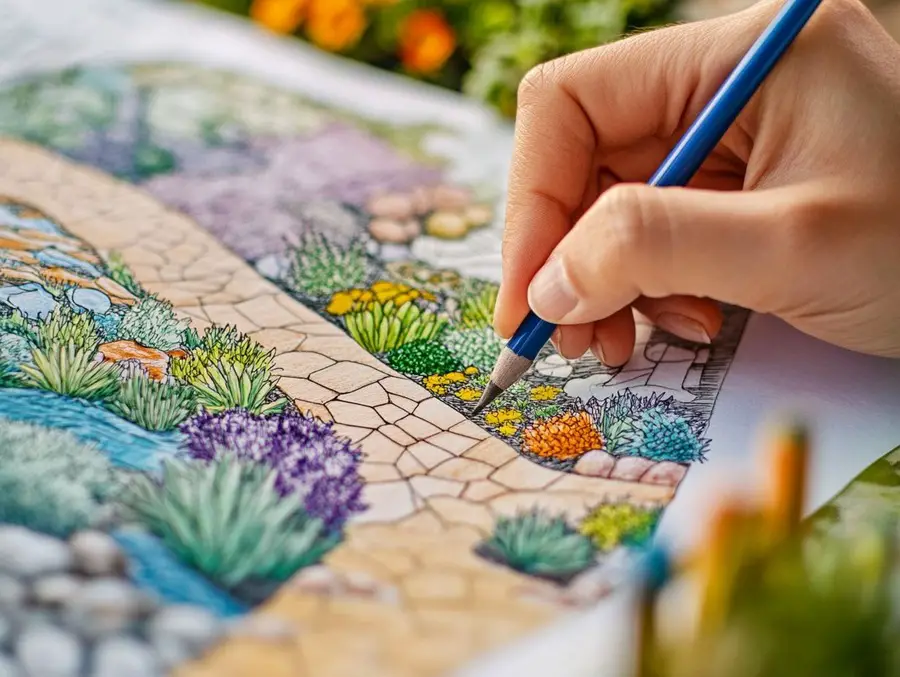
Planning and Design for Xeriscaping isn’t just about saving water. It’s about creating a stunning, eco-friendly landscape that thrives with minimal effort.
If you’re tired of high-maintenance yards and costly irrigation, this approach will transform your space into a sustainable oasis.
With smart plant choices and strategic design, you can have a beautiful, low-water landscape that flourishes year-round.
Planning and Design for Xeriscaping Key Takeaways
- Planning and Design for Xeriscaping involves selecting drought-tolerant plants, improving soil health, and using water-efficient irrigation.
- Key steps include assessing your climate, grouping plants by water needs, and incorporating mulch to retain moisture.
- This method reduces water use, lowers maintenance, and creates a sustainable, visually appealing landscape.
Planning and Design for Xeriscaping: Create a Thriving Oasis
Xeriscaping isn’t just another gardening fad. It’s a sustainable way to landscape that puts water conservation and environmental health front and center.
This method comes with a bunch of perks, from slashing your water bills to boosting your home’s curb appeal.
Before you dive into your xeriscape adventure, think about some key factors and follow the guidance on the design and implementation process.
You’ll want to check out tips for keeping your garden lush and water-efficient.
Transform your landscape with xeriscaping and uncover a greener way to thrive!
What is Xeriscaping Planning and Design?
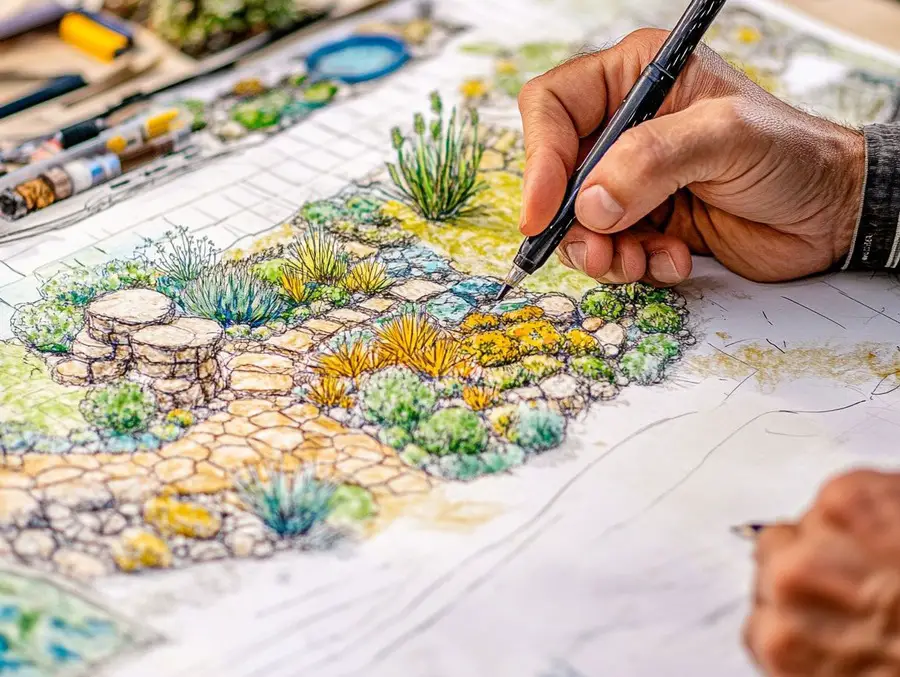
Xeriscaping is a landscape design approach that really emphasizes water conservation, and it’s all about using drought-resistant plants.
This makes it a fantastic option for areas where water is in short supply.
By embracing xeriscape principles, you can create a stunning outdoor living space that also prioritizes ecological design, supporting local biodiversity and native ecosystems.
This method helps you cut down on water usage, but it also boosts the beauty of your garden through smart plant selection, proper soil preparation, and efficient irrigation systems.
Definition and Principles
The idea of xeriscaping is all about creating a landscape that cuts down on water use while boosting ecological health.
You’ll be applying xeriscape principles that focus on soil health, choosing the right plants, and using water-efficient irrigation.
This sustainable landscaping approach encourages you to embrace native ecosystems and drought-tolerant plants, making your outdoor space more resilient.
When you put these principles into action, you’re not just saving water. You’re also creating a diverse habitat for local wildlife.
By carefully selecting plants that thrive in dry conditions, you’re enhancing biodiversity, which helps support pollinators and other beneficial creatures that are vital for a balanced ecosystem.
Managing soil health with techniques like mulching and composting helps nurture the land, improving moisture retention and nutrient cycling.
By adopting xeriscaping, you can effectively lower your environmental impact while enjoying a landscape that flourishes, even when the weather gets dry.
Benefits of Xeriscaping
The benefits of xeriscaping go way beyond just looking good.
They bring along environmental, financial, and aesthetic perks that help pave the way for a sustainable future.
By using water-saving techniques and opting for drought-tolerant landscaping, you can seriously cut down on your water bills and shrink the ecological footprint of your outdoor space.
And, when you incorporate native and low-maintenance plants, you’re boosting plant diversity and resilience, which means your garden can thrive with very little effort from you.
Environmental, Financial, and Aesthetic Advantages
Xeriscaping comes with a bunch of perks, like reducing your environmental impact, saving money with lower water usage, and making your outdoor space look stunning with drought-resistant plants that create vibrant landscapes.
When you plant pollinator-friendly flowers, you’re not just adding beauty. You’re also helping boost local biodiversity.
By adopting xeriscaping practices, you can really cut down those water bills and enjoy long-term financial relief.
For example, a well-designed xeriscape can slash your outdoor water consumption by up to 70%, which adds up to some serious savings over time.
Using native plants is a smart move, too. These species are perfectly adapted to your local climate, which means they need less maintenance and provide great habitats for wildlife.
This kind of landscaping not only conserves resources but also leads to a self-sustaining garden that thrives with minimal effort, creating a resilient ecosystem that benefits both you and the environment.
Things to Consider Before Xeriscaping
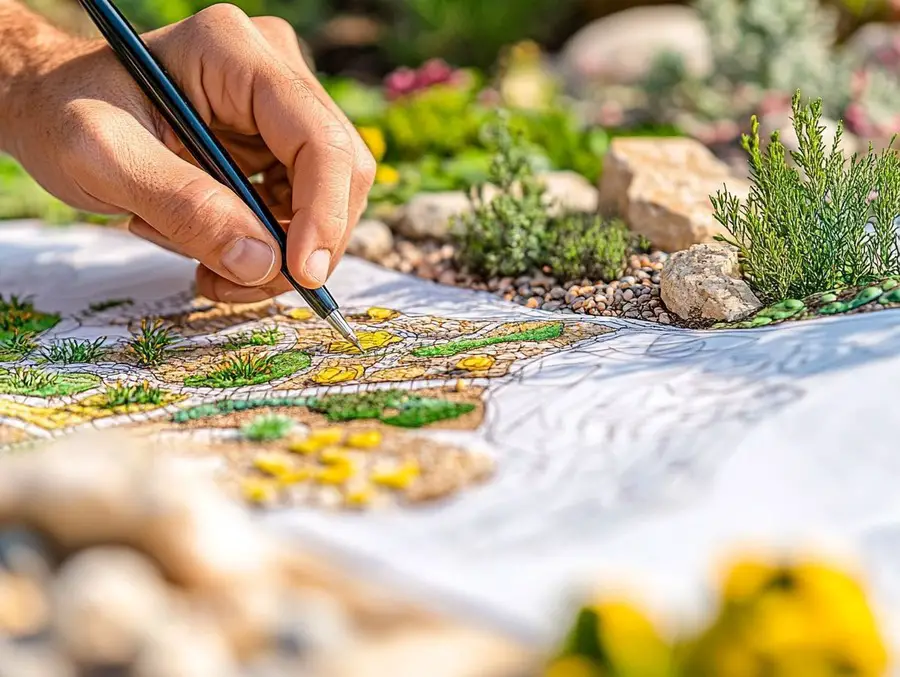
Before you dive into your xeriscaping adventure, it’s super important for you to take a good look at factors like climate, soil condition, and water availability.
This way, you can make sure your garden really thrives in its unique environment.
Getting to know your garden zones and the specific microclimates around you will help you pick the right drought-resistant plants and design strategies that work best for your location.
Soil preparation is key to making sure you retain moisture and keep your soil fertile, setting the stage for a successful xeriscape landscape.
Assessing Climate, Soil, and Water Availability
When you’re planning your xeriscape, it’s super important to assess the climate, soil, and water availability because these elements play a big role in how successful your landscaping efforts will be.
By understanding your local climate, you can choose drought-tolerant plants that will actually thrive in your area.
Plus, proper soil preparation is key to ensuring those plants grow well and retain moisture.
To get started in assessing these factors, you can dive into local climate data, which typically includes average rainfall, temperature ranges, and even those pesky seasonal extremes.
Using tools like soil moisture meters and pH test kits will give you valuable insights into your soil’s nutrient composition and drainage capabilities.
Don’t forget to consult local resources like extension services or native plant societies to find out which vegetation will work best for your area.
Also, pay attention to things like sunlight exposure and wind patterns, as they can really impact plant health.
With some thorough research and practical tools in hand, you’ll be well on your way to creating a resilient xeriscape that fits right into the local ecosystem.
Designing Your Xeriscape
When you’re designing your xeriscape, it’s all about careful planning.
You’ll want to focus on things like plant selection, the layout of your garden, and how to incorporate hardscape elements that enhance your outdoor living space.
By picking the right xeriscape plants and using effective design strategies, you can create a beautiful garden that thrives with minimal water and maintenance.
Think about how features like ornamental accents, ground cover, and other xeriscape elements can tie together for a more ecological landscaping approach.
Choosing Appropriate Plants and Layout
Choosing the right plants and a smart garden layout is essential for a successful xeriscape.
This way, you can really make the most of those xeriscape plants for both visual flair and practical benefits.
Going for native plants is a smart move, as they adapt better to your local environment.
And adding elements that offer seasonal interest helps keep your garden looking great all year round.
When picking your plants, think about their drought tolerance.
This not only cuts down on water usage but also makes maintenance a breeze, leading to a more sustainable garden.
Don’t forget to check out the ecological perks of your chosen plants, like whether they attract pollinators or provide homes for local wildlife.
For a cohesive look, group plants with similar water and sunlight needs together.
This not only boosts the garden’s visual appeal but also simplifies your care routine.
A well-thought-out layout can create functional spaces, like shaded nooks or pathways, making it easier to get around and encouraging you to enjoy the beauty of your natural surroundings.
Implementing Your Xeriscape Plan
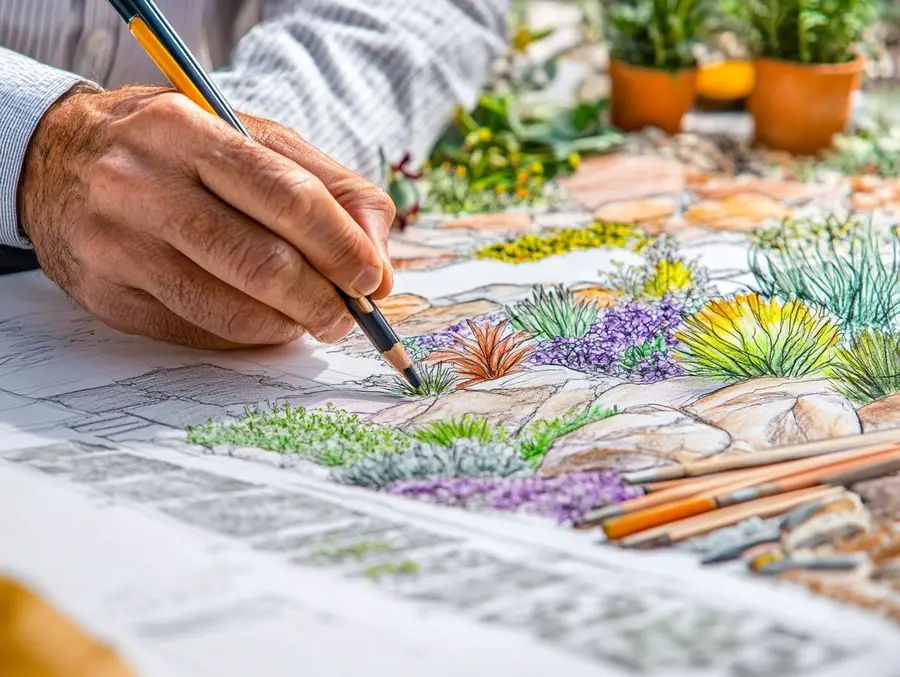
To implement your xeriscape plan, you need a step-by-step guide that takes you through everything from prepping the soil to setting up efficient irrigation systems, all while making sure your garden thrives with minimal water.
Start by using effective planting techniques and plan out some rainfall harvesting strategies to really make the most of your water conservation efforts.
This approach doesn’t just boost the environmental benefits of your garden.
It also makes ongoing maintenance easier, giving you a sustainable solution for your outdoor design.
Step-by-Step Guide to Installation
A step-by-step guide to installation can help you set up your xeriscape just right, focusing on key elements like irrigation systems, planting techniques, and garden layout. Start with preparing the soil, then strategically arrange your plants and use mulching techniques to keep that moisture in.
- First, take a good look at your existing soil conditions because this is critical for plant health. Testing the soil pH and nutrient levels will give you valuable insights, helping you make any necessary adjustments for optimal growth.
- Once the soil is prepped, it’s time to design your garden layout. Consider sun exposure and water drainage, as these factors will guide where you place your plants.
- Opt for native and drought-resistant plants since they’re built to thrive in your environment. Group them based on their water needs to reduce waste. If necessary, incorporate drip irrigation systems to ensure that water reaches the roots efficiently.
These essential steps not only boost the sustainability of your xeriscape but also make it visually appealing, creating a thriving ecosystem that conserves water while looking great year-round.
Maintaining Your Xeriscape
Keeping your xeriscape in top shape is key to its long-term health and sustainability.
It requires regular garden maintenance along with some clever troubleshooting tips.
Focus on practices that boost moisture retention, enhance soil fertility, and manage pests effectively.
These elements work together to enhance the biodiversity in your xeric garden.
Also, getting a handle on seasonal changes will help you tweak your maintenance routines, ensuring your garden stays vibrant all year round.
Proper Care and Troubleshooting Tips
Proper care and troubleshooting tips are essential for you to maintain a thriving xeriscape, ensuring that your plants stay healthy and your garden continues to flourish.
By regularly monitoring your garden and understanding seasonal variations, you can spot potential problems early and implement effective pest management strategies to protect your plants.
Establishing a consistent watering schedule is crucial.
Make sure the frequency and amount of water match the specific needs of each type of plant.
During dry spells, it’s best to water deeply but infrequently to encourage those roots to grow deep.
Keep an eye out for common issues like yellowing leaves, which can signal nutrient deficiencies or overwatering.
Using integrated pest management techniques can also be really helpful.
These practices focus on prevention and using beneficial insects to tackle harmful pests.
By following these best practices, you can enhance the resilience of your xeriscape and create a more sustainable outdoor environment.
Planning and Design for Xeriscaping FAQs
What is xeriscaping and why is it important?
Xeriscaping is a method of landscape design that focuses on using drought-resistant plants and techniques to conserve water.
It is important because it helps reduce water usage, save money, and promote sustainability.
What are some key elements to consider when planning and designing a xeriscape?
Some key elements to consider include selecting appropriate plants for the climate and soil, incorporating efficient irrigation methods, using mulch and other ground cover, and creating a functional layout for the space.
How can I incorporate color and variety into a xeriscape?
Contrary to popular belief, xeriscaping doesn’t have to be dull and monochromatic.
You can incorporate color and variety by choosing plants with different bloom times, textures, and foliage colors.
You can also add non-plant elements such as rocks and decorative accents.
What are some common mistakes to avoid when planning and designing a xeriscape?
Some common mistakes include choosing inappropriate plants for the climate, not properly preparing the soil, over-irrigating, and not considering the overall aesthetic of the space.
It’s important to do thorough research and consult with a professional if needed.
Are there any specific considerations for planning and designing a xeriscape in a small space?
Yes, in a small space, it’s important to carefully choose plants that won’t outgrow the area and create overcrowding.
You may also need to get creative with vertical gardening and utilizing containers to maximize space.
How can I maintain a xeriscape once it’s been designed and planted?
Maintenance for a xeriscape involves regular weeding, pruning, and mulching, as well as monitoring irrigation and adjusting as needed.
It’s also important to regularly check for any pest or disease issues and address them promptly.
Overall, a well-designed xeriscape should require less maintenance than a traditional lawn and garden.
Xeriscape Garden Design & Layout: Easy Water-Wise Beauty
What is xeriscaping? A beginner’s guide to drought-tolerant landscaping
Related Content
Visit my Amazon Influencer Page for videos and gardening products Grow Your Own Garden


